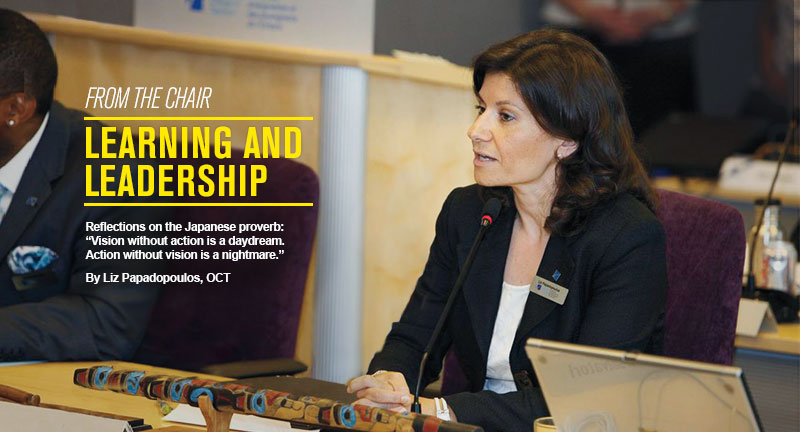
Every summer, teachers sit down to plan out the school year and ways to deliver the curriculum to a whole new set of unknowns — their students. If we repeated everything we taught the year before in exactly the same way, learning would occur, but not at optimum levels.
Planning and professional development were on the agenda at the College’s annual meeting of members this June. After we delivered our reports, a member asked about mandatory professional development for teachers. She asked why we didn’t have such a requirement.
I told her that professional development comes in many forms, and that it would be difficult to be employed at any publicly funded school board and NOT participate in ongoing professional learning. From team planning to moderated marking, from professional learning communities to other educational initiatives that make their way into our lives, you’d be hard pressed to find any teacher who is not committed to improving their practice. Taking AQs and ABQs is just the tip of the professional development iceberg.
The worst thing any professional can become is stagnant. This is virtually impossible, however, for teachers. This rapidly changing world requires us to keep a finger on the pulse of new trends, technologies and teaching methods.
In the same way, it’s important for organizations to take stock of where they are today, what they hope to achieve and why it matters.
This fall, the College Council will embark on a strategic-planning retreat to set goals and objectives together.
You spent the summer relaxing, re-energizing and mapping out the curriculum that you are going to have to teach this fall. By now, you know where to direct your energies and your resources.
In this age of accountability, institutions must also demonstrate to the public and their membership exactly what they hope to accomplish and why. With governance scandals, issues of transparency and misuse of expenses making headlines, your Council wants you to know that it is committed to ensuring that our resources are used purposefully and appropriately. Strategic planning will help the College to explore external trends shaping our work, examine our priorities, and build our capacity to think and act strategically.
This summer, we asked stakeholders to look at the College’s mandate and give us feedback on where we might focus our efforts for the next three years. As Council and senior staff get ready to participate in the upcoming strategic-planning session, we’re thinking hard about the future and our goals for the next few years. Where would you like to see this organization in five or 10 years? What do you think our priorities should be?

Keeping success in mind

This summer, I picked up a copy of the international bestseller, Lean In: Women, Work, and the Will to Lead. Written by Facebook’s chief operating officer, Sheryl Sandberg, the book is filled with personal anecdotes and compelling research about women in the workplace and the struggle to find work-life balance. While Lean In is a must-read for working women, especially those aspiring to leadership positions, the book offers a vital message and sound advice for men and women alike. As we return to work this fall, let’s do more to encourage young women and students to “lean in” and lead. And on a personal note, how can we ensure that our work and home life is balanced, satisfying and successful?
In a television first, the acclaimed TED Talks teamed up with public broadcaster PBS to air an exclusive one-hour special on teaching and learning. TED Talks Education, pbs.org/wnet/ted-talks-education, featured education advocates and prominent leaders including Bill Gates, singer John Legend and education reformer Geoffrey Canada. Together, they addressed issues around high school dropout rates and the US education crisis. Don’t miss educator Rita F. Pierson, whose moving speech quickly became a YouTube sensation, and TED’s most-watched speaker, Sir Ken Robinson, on building creative classrooms.
PHOTO: TESSA BUCHAN